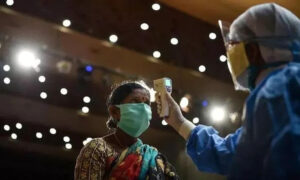WHO raises concerns over surge in human bird flu cases, highlights ‘Extraordinarily High’ mortality rate

WHO raises concerns over surge in human bird flu cases, highlights 'Extraordinarily High' mortality rate (Representational Pic)
The World Health Organization (WHO) has expressed deep concern over the increasing incidence of bird flu, or avian influenza, crossing the species barrier, resulting in a surge of cases with an ‘extraordinarily high’ mortality rate. According to WHO, the (H5N1) strain has evolved into a “global zoonotic animal pandemic,” posing a significant threat to human health.
WHO’s chief scientist, Jeremy Farrar, emphasized the alarming evolution of the virus, which initially infected ducks and chickens before spreading to mammals, including humans. The current outbreak, which began in 2020, has resulted in the deaths of millions of animals, with concerns mounting as the virus adapts to infect humans and potentially transmit between individuals.
The outbreak initially emerged in commercial turkey farms in the US in early 2020 and has since affected a wide range of animals, including wild birds, land mammals, and marine species. Notably, the virus has also affected cows and goats, a surprising development for experts who did not consider these animals susceptible to avian influenza.
While human infections with avian influenza viruses are rare, they can occur through contact with infected birds or animals. The CDC explains that infected birds shed the virus through various bodily fluids, and humans can become infected through contact with these fluids or through inhalation.
Despite the absence of evidence indicating human-to-human transmission of the influenza A(H5N1) virus, Farrar highlighted the significant number of cases where humans have been infected through contact with animals, resulting in an alarmingly high mortality rate. According to WHO data from 2003 to April 1, 2024, there have been 889 human cases reported across 23 countries, with 463 fatalities, indicating a case fatality rate of 52%.
The WHO continues to monitor the situation closely and urges robust measures to prevent further spread of the virus and mitigate its impact on public health.







